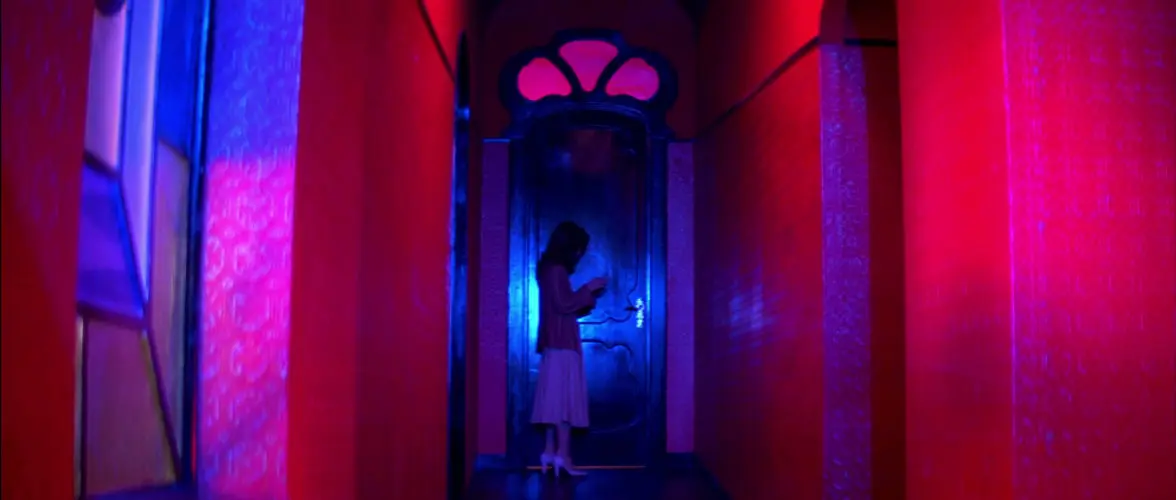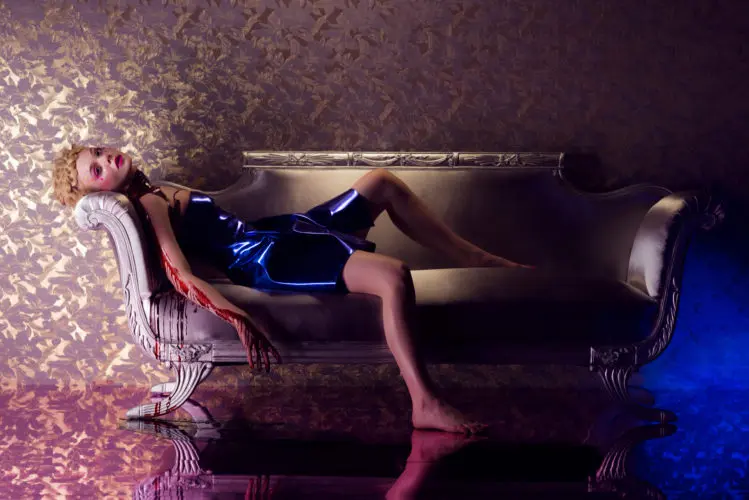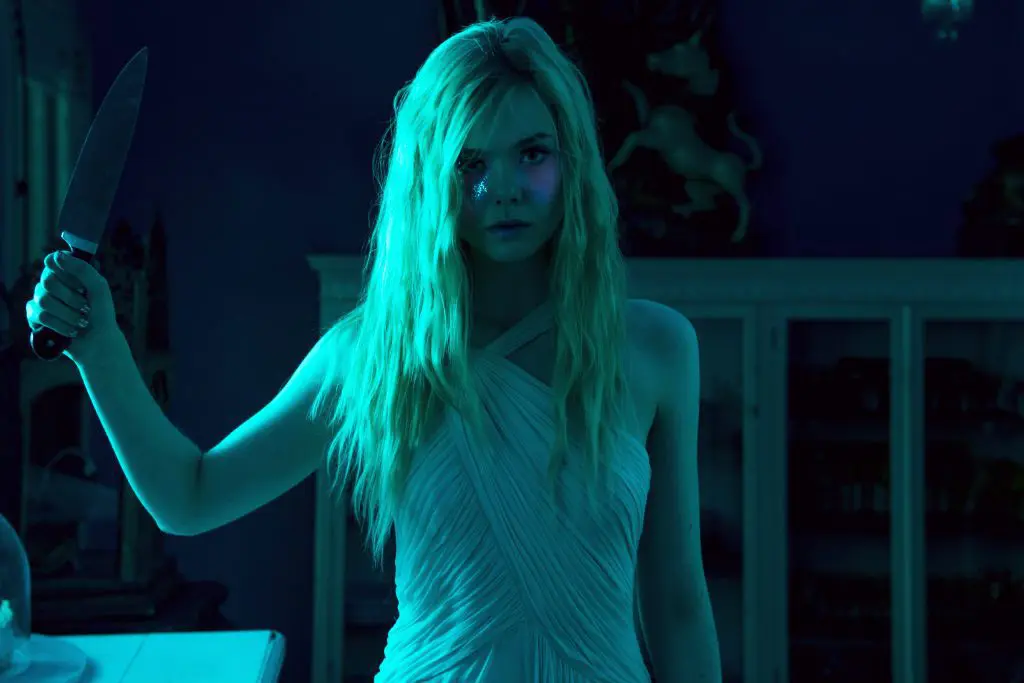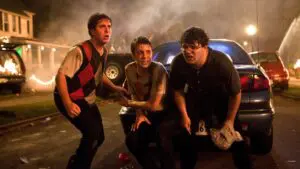In light of the soon to be released remake of giallo horror classic Suspiria, it seems as good a time as ever to reexamine a film that heavily nodded to the themes and aesthetic of that particular story. The Neon Demon had its wide release in the Summer of 2016 after receiving a medley of cheers and jeers during its world premiere at the Cannes Film Festival. Despite possessing the name recognition from being helmed by Nicolas Winding Refn, the director responsible for every thinking man’s favourite action flick, Drive, the film barely made a dent at the box office and quickly fell into obscurity aside from a small cult following.
Trading in a dance academy for the glamorous world of runway fashion modelling, The Neon Demon, as with Suspiria, depicts a profession typically associated with elegance and then interweaves sinister themes of the occult throughout. Fresh-faced 16-year-old Jesse (Elle Fanning) has arrived in Los Angeles and is in the midst of entering the viper pit that is the cutthroat fashion world. Although just beginning her modelling career, everyone around Jesse is in awe of her natural perfection with many wanting to bask in her seemingly effortless beauty.
With so many onlookers desperately coveting what she has, there is quickly an undercurrent of danger as it appears that her apparent naivety is at risk of being exploited from every possible angle. From the seedy hotel manager (Keanu Reeves), her considerably older romantic partner (Karl Glusman), the overly accommodating makeup artist (Jena Malone), and a duo of attention starved “older” models (Abbey Lee & Bella Heathcote), you are never sure which force will become Jesse’s biggest obstacle as she quickly rises in the ranks of the fashion model world.

The colorful depiction of horror in Suspiria was clearly an influence for The Neon Demon
Haters and fans alike find some common ground in conceding that The Neon Demon at the very least is visually striking throughout. Director Nicolas Winding Refn (who is in fact colour blind in real life) clearly has a distinctive eye, as the film is drenched in vibrant blue and red hues, harkening back to what was on display in 1977’s Suspiria. Even when the material portrayed is downright horrific, Refn maintains this same arresting aesthetic, which manages to make grotesque events feel like the latest glossy fashion spread for Vogue. I don’t know how many directors can confidently state that they were able to depict necrophilia and cannibalism in such a stylishly alluring manner.
The Neon Demon is more than simply a pretty face, however, as the combination of the pulse-pounding otherworldly score by Cliff Martinez, purposefully stilted plastic dialogue, and wild shifts in story material lead to an entrancingly lurid experience. Much like the protagonist Jesse who is increasingly hypnotized by her own beauty and the magnetism it has over everyone around her, I found myself similarly mesmerized as the film progressed. All of this contributes to a film that for the bulk of its runtime feels like a dream that increasingly heightens until finally descending into a nightmare where the same beauty now takes on a malevolence that is just as stunning to behold. The film’s climactic moment best demonstrates this, as similar locations that were minutes before full of light and seemingly inviting are overtaken by ghastly red and blue hues.

One of many instances where the grotesque is made beautiful thanks to Refn’s artistic eye
Some consistent criticisms of the film relate to the events depicted being unclear as well as the story’s overarching message being muddied by a lack of explanation. Unlike Suspiria which has a straightforward plot, The Neon Demon never more than alludes to the supernatural leaving some of the film more open to interpretation. By the film’s conclusion, the viewer’s mind is overloaded with symbols, which can be frustrating for some, but for others adds to the film’s hypnotic allure. I find I am consistently left with a whirlwind of thoughts after watching the story unfold with the exact meaning being interpreted differently each time. The film touches on themes of authenticity and the dangers associated with narcissism, but overall this is a biting critique of the fashion industry and how beauty icons are always ultimately at the mercy of the consumer’s interest in their appeal.
The horrifying fashion tale loses its way somewhat when (as with his previous story Only God Forgives) Refn seems more intent on trying to provoke the audience rather than tell a thoughtful story. Scenes such as a knife being inserted into a character’s mouth to imitate oral sex and the infamous necrophilia scene feel manufactured to shock, but in Refn’s defence these scenes do add to the collective symbolism and serve a point (even if they are rather unpleasant to watch). The Neon Demon, as with most art house films, is meant to be divisive and there is a good chance that someone viewing it for the first time may actually hate it. However, I guarantee that you will still be thinking about the story for days afterwards, which is more than can be said for many horror films you may watch this Halloween.




